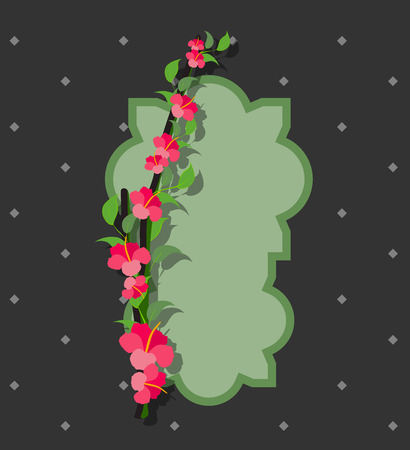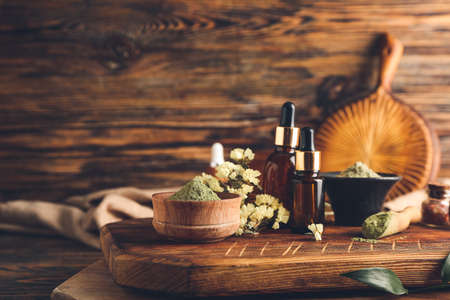Introduction to Ubtan: Timeless Beauty Ritual
Ubtan is more than just a natural skincare blend—it is a cherished beauty ritual that has been passed down through generations in Indian households. Rooted deeply in Ayurveda, the ancient science of life and wellness, ubtan is traditionally crafted using a mix of potent herbs, grains, and natural extracts. Its significance goes beyond daily self-care; ubtan holds a special place in Indian culture, especially during auspicious occasions such as weddings and major festivals. The application of ubtan is not only believed to enhance the skin’s natural radiance but also symbolizes purification and spiritual cleansing. This age-old practice connects families and communities, as the aromatic paste is lovingly prepared and applied together, creating moments of joy and togetherness. Whether it’s a bride’s Haldi ceremony or Diwali preparations, ubtan remains an integral part of the Indian beauty legacy, blending tradition with holistic wellness for glowing, healthy skin.
Understanding Ayurveda: The Science Behind Ubtan
Ayurveda, the ancient Indian system of wellness, is at the heart of every traditional Ubtan recipe. Rooted in over 5,000 years of wisdom, Ayurveda believes that true beauty emerges from balancing the mind, body, and spirit. When it comes to skincare, this holistic science uses natural herbs to bring harmony among the three Doshas—Vata, Pitta, and Kapha—which define our unique skin types. Ubtan for glowing skin is not just a festive ritual but also a deeply therapeutic practice that works by balancing these Doshas using time-honoured Indian ingredients.
The Three Doshas and Their Role in Skin Health
According to Ayurveda, everyone has a unique combination of the three Doshas. Each Dosha responds differently to various herbs and ingredients, which makes Ubtan a customizable beauty essential for all Indian skin tones and concerns. Here’s how each Dosha influences your skin:
| Dosha | Skin Characteristics | Best Ayurvedic Herbs in Ubtan |
|---|---|---|
| Vata | Dry, thin, prone to flakiness | Sandalwood (Chandan), Almond (Badam), Sesame oil (Til) |
| Pitta | Sensitive, prone to redness or breakouts | Turmeric (Haldi), Neem, Rose petals (Gulab) |
| Kapha | Oily, thick, may have enlarged pores | Besan (Gram flour), Multani Mitti (Fuller’s earth), Tulsi (Holy Basil) |
How Ubtan Works According to Ayurveda
The secret behind Ubtan’s glowing results lies in its synergy of Ayurvedic herbs. These natural powders and oils are carefully chosen to suit your Dosha type. For instance, Haldi (turmeric) acts as an anti-inflammatory hero for Pitta skin during summer weddings or festive get-togethers like Diwali and Karva Chauth. Meanwhile, soothing Chandan cools Vata imbalances when dry winter winds affect your radiance during Pongal or Lohri celebrations.
Why Indian Ingredients Make All the Difference
Each herb in traditional Ubtan has been selected based on centuries of Indian wisdom. From earthy Besan that gently exfoliates to fragrant Rose petals that soothe festive-stressed skin, Ubtan transforms everyday self-care into a celebration of India’s botanical heritage. This blend of science and culture ensures your glow is always rooted in what truly suits you—naturally and beautifully.

3. Star Ingredients: Celebrated Ayurvedic Herbs in Ubtan
Ubtan’s magic for glowing skin is rooted in time-honoured Ayurvedic wisdom, with each ingredient chosen for its transformative properties and deep connection to Indian heritage. Let’s explore the iconic herbs and natural elements that make ubtan a festive favourite among beauty lovers across India.
Turmeric (Haldi): The Golden Glow Giver
No ubtan recipe is complete without turmeric. Revered for its anti-inflammatory and antibacterial qualities, turmeric helps fight acne, reduces pigmentation, and imparts an unmistakable golden glow so loved during shaadi season and festivals like Diwali. It’s the secret behind that classic bridal radiance!
Sandalwood (Chandan): Cooling & Soothing Touch
Sandalwood is prized in Indian rituals for its calming aroma and cooling effect on the skin. It soothes irritation, balances oil production, and leaves your complexion looking calm and luminous—perfect for those humid Indian summers or after a day of Holi celebrations.
Besan (Gram Flour): The Purifying Base
Besan, or gram flour, forms the base of most traditional ubtan blends. Its gentle exfoliating action clears away dead skin cells, unclogs pores, and brightens dull skin. Besan is every Indian mum’s go-to DIY fix for pre-wedding glow-ups or routine festive beauty prep.
Rosewater (Gulab Jal): Hydration & Fragrance
A splash of rosewater adds not just a soothing floral fragrance but also hydrates and tones the skin. Known to reduce redness and maintain pH balance, rosewater infuses ubtan with freshness—making it ideal for both daily use and special occasions.
Neem: Nature’s Purifier
Neem leaves bring powerful antibacterial and antifungal properties to the mix. Especially beneficial for those prone to pimples or uneven texture, neem purifies the skin deeply, keeping it clear and naturally radiant even in the midst of city pollution or monsoon humidity.
Together, these celebrated ingredients create an ubtan blend that delivers luminous “desi” skin—a ritual cherished from generation to generation, especially during major festivities where glowing skin is non-negotiable!
4. Crafting Your Own Ubtan: Step-by-Step Guide
Embrace the festive spirit and ancestral wisdom by preparing your own Ubtan at home—a cherished ritual during Indian weddings, Diwali celebrations, and even in daily skincare routines. This DIY recipe uses locally-sourced ingredients found easily in Indian households, making it both convenient and rooted in tradition.
Essential Ingredients for Festive Ubtan
| Ingredient | Purpose | Cultural Touch |
|---|---|---|
| Besan (Gram Flour) | Natural cleanser and exfoliator | Mainstay in Haldi ceremonies and pre-wedding rituals |
| Haldi (Turmeric Powder) | Brightens skin and reduces blemishes | Symbol of purity and auspiciousness in Indian culture |
| Chandan (Sandalwood Powder) | Cools and soothes the skin | Commonly used during festivals like Holi for its fragrance |
| Rose Water or Milk | Binds the ingredients, hydrates skin | Integral to daily beauty regimens across India |
| Neem Powder (Optional) | Antibacterial benefits for acne-prone skin | Sacred tree in Indian tradition, often used during pujas |
| Kesar (Saffron) Strands (Optional) | Adds glow and luxury | A regal touch for special occasions like Karva Chauth or Eid |
Step-by-Step Preparation Method
- Mix Dry Ingredients: In a clean bowl, combine 2 tablespoons besan, 1 teaspoon haldi, 1 teaspoon chandan powder, and 1 teaspoon neem powder if desired. Add a few strands of kesar for extra radiance during festivals.
- Add Liquid: Slowly pour in rose water or milk until you achieve a smooth, spreadable paste. Use rose water for cooling effect during summer, or warm milk for nourishing hydration in winter.
- Bless the Mixture: As is customary before important rituals, close your eyes and offer a silent prayer or intention for glowing health—infusing positivity into your ubtan.
- Apply Generously: Spread the ubtan evenly over your face, neck, and exposed areas. Use gentle upward strokes as followed by mothers and grandmothers across generations.
- Let it Set: Allow the mask to dry for 15–20 minutes while you relax with soothing bhajans or festive music playing in the background.
- Remove with Ritual: Wet your hands and gently massage off the ubtan using circular motions. Rinse thoroughly with lukewarm water—just as brides do during their haldi ceremony for that unmistakable bridal glow!
Puja-Friendly Tips & Daily Customs
- Mornings are Auspicious: Applying ubtan at dawn aligns with Ayurvedic principles and maximises its benefits.
- Add Ghee for Extra Nourishment: A drop of pure desi ghee can be added on special days for deep moisturisation.
- Create a Family Ritual: Involve elders or children—celebrate togetherness just like traditional mehendi nights or Chhath Puja gatherings.
- Scented Touch: Enhance festivity by adding a pinch of kasturi manjal (wild turmeric) for an aromatic experience reminiscent of temple visits.
This simple yet meaningful DIY Ubtan connects you to India’s rich heritage while providing radiant skin—making every application feel like a mini-festival at home!
5. How to Use Ubtan: Rituals for Authentic Glow
In India, the application of Ubtan is not just a beauty ritual—its an age-old tradition that brings together family, celebration, and holistic self-care. Whether you’re prepping for your big day, getting ready for Diwali, or indulging in a weekend pampering session, here’s how you can weave Ubtan into your self-care rituals with a touch of authentic desi flair.
Bridal Haldi Ceremony: The Golden Glow
No Indian shaadi is complete without the iconic Haldi ceremony, where brides (and sometimes grooms!) are lovingly covered in a turmeric-based Ubtan by friends and family. This ritual isn’t just about fun and laughter—it’s believed to purify the skin, ward off negativity, and ensure a radiant glow on your special day. For this auspicious moment, traditional Ubtan is made with besan (gram flour), haldi (turmeric), chandan (sandalwood powder), rosewater, and dahi (curd). The paste is gently massaged onto the skin in upward strokes, infusing every inch with love and positive energy.
Festival Preps: Get Party-Ready
From Karva Chauth to Holi and Diwali, festivals call for luminous skin. In many households, women gather before the festivities to whip up fresh batches of Ubtan using seasonal herbs like neem or tulsi for their detoxifying properties. A quick 15-minute application on face, arms, and legs before your mehendi session or sangeet night can work wonders! Rinse off with lukewarm water while chanting your favourite Bollywood tunes—because celebrations should always be extra special!
Weekend Pampering: Self-Love Sundays
You don’t need a special occasion to treat yourself to some Ayurvedic TLC. Set aside some ‘me-time’ on Sunday mornings to prepare a gentle Ubtan with oatmeal, honey, and milk. Apply it in circular motions while sipping on chai or listening to your go-to playlist. Let it dry naturally as you meditate or scroll through Insta reels. Wash off to reveal soft, glowing skin that feels as festive as your mood!
Tips for Maximum Glow
- Always apply Ubtan on clean, damp skin for best absorption.
- Massage gently—think of it as abhyanga (Ayurvedic self-massage) for your face and body.
- Use natural ingredients straight from your kitchen for that homemade goodness.
The Takeaway
Whether it’s a bridal bash or a solo spa day at home, using Ubtan connects you with centuries-old Indian traditions while giving your skin a radiant boost. So go ahead—embrace these rituals and let your inner glow shine through!
6. Modern Twists: Fusing Tradition with the Latest Trends
India’s beauty landscape is buzzing with innovations, and Ubtan isn’t left behind! Today, millennials and Gen Z are giving this age-old Ayurvedic ritual a chic upgrade by blending it seamlessly into their contemporary routines. If you adore that Instagram-worthy glow, here’s how to give your traditional Ubtan a modern desi makeover while staying true to its roots.
K-Beauty Meets Ayurveda: The New Glow Formula
K-beauty’s glass skin trend is all about dewy, luminous complexions—something Indian skin loves too! Try mixing your classic Ubtan paste with a few drops of fermented rice water or hydrating essence before application. The result? A fusion mask that delivers both Ayurveda’s detoxifying benefits and K-beauty’s intense hydration—talk about a global glow-up!
Trending Application Hacks for the Busy Desi
No time for a full spa day? No worries! Make your Ubtan multitask by using it as a quick exfoliating cleanser in the shower or add it to your weekly sheet mask routine. For a festival-ready radiance, blend Ubtan powder into your favourite plain yoghurt and apply as a spot treatment on dull areas—perfect pre-wedding or Diwali prep!
Customising Your Ubtan: Personalise Like a Pro
Personalisation is in vogue! Add rosehip oil for anti-aging, swap milk for aloe vera gel if you have sensitive skin, or mix in a dash of turmeric latte (haldi doodh) for extra glow. Even Bollywood stars are raving about these clever combos on social media.
Incorporating Ubtan into Your Skincare Rituals
Don’t limit Ubtan to just special occasions! Use it as a gentle daily cleanser, blend with honey for a nourishing face pack, or mix with cucumber juice for an after-sun soothing mask. With these modern twists, Ubtan becomes more than just tradition—it’s your ticket to radiant skin, the Indian way.
7. Conclusion: Embracing Heritage, Radiating Glow
As we reach the final step of our journey with Ubtan for glowing skin, it’s time to celebrate the beauty and wisdom of India’s age-old traditions. Rediscovering Ubtan is not just about achieving that coveted festive glow—it’s about reconnecting with our roots, embracing ancient Ayurvedic rituals, and honoring the vibrant legacy passed down by generations of Indian women. Applying Ubtan is a joyful act of self-love, blending turmeric, besan, sandalwood, and rose water into a fragrant paste that feels both comforting and empowering. In a world overflowing with global beauty trends, Ubtan reminds us that our own heritage holds powerful secrets for healthy, radiant skin. Whether you are preparing for Diwali, wedding season, or simply seeking a mindful moment in your daily routine, let Ubtan be your bridge to cultural pride and self-care. So go ahead—mix up your favorite herbs, indulge in this nurturing ritual, and let your natural glow shine as bright as the spirit of India itself!

